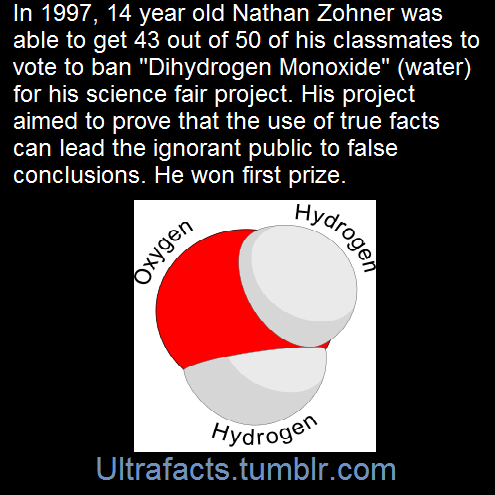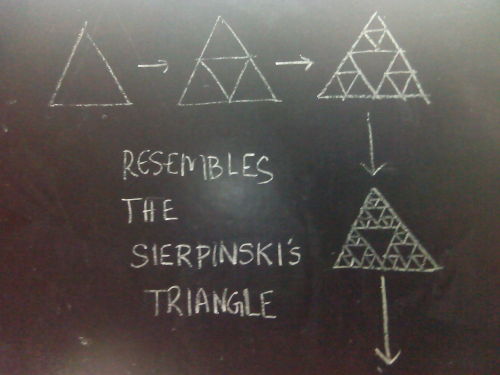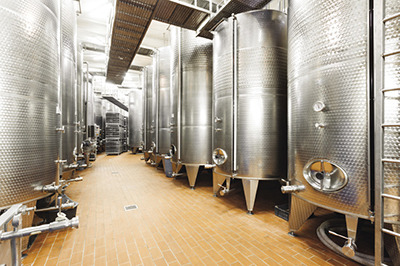117 posts
Latest Posts by t-sci-eng - Page 2

Nontoxic underwater adhesive could bring new surgical glue
A nontoxic glue modeled after adhesive proteins produced by mussels and other creatures has been found to out-perform commercially available products, pointing toward potential surgical glues to replace sutures and staples.
More than 230 million major surgeries are performed worldwide each year, and over 12 million traumatic wounds are treated in the United States alone. About 60 percent of these wounds are closed using mechanical methods such as sutures and staples.
“Sutures and staples have several disadvantages relative to adhesives, including patient discomfort, higher risk of infection and the inherent damage to surrounding healthy tissue,” said Julie Liu, an associate professor of chemical engineering and biomedical engineering at Purdue University.
Most adhesives do not work well in moist environments because water interferes with the adhesion process. While developing adhesives that overcome this problem is challenging, glues for medical applications must meet an additional requirement: they must be nontoxic and biocompatible, as well.
Read more.
coolest physics thing that u know??
The coolest physics thing that I know keeps changing over time. But here is one that is extremely fascinating ( and also exaggerated for the effect ; but true! ):
Person living at the top of a skyscraper experiences time faster than one at the bottom
It is a known fact that the higher you are in the earth’s ** atmosphere, the lesser the effect of gravity is.
But the lesser the effect of gravity is, the faster the time ticks.

By how much you ask? Even if you live on the top floor of the Burj Khalifa your entire life, you would have aged more only by a few milliseconds than your friends at the bottom.
( Sure, doesn’t seem like much, but hell would break loose if we don’t consider this on the bigger scale of things )
This is known as Gravitational time dilation and is at the foundations of General Theory of Relativity. (More about this in an upcoming post)
Have a great day and thanks for asking!
EDIT: ** Lets just say hypothetically the earth is not spinning( just to ignore special relativistic effects) and we are looking at only the effects of height.

This is how scientists think birds see the Earth’s magnetic field.
See how the black patches align over certain areas? That dark patch at the base of their vision shows South, with the reverse indicating North. Researchers think this might be how birds like pigeons can use magnetic fields to navigate.
Here’s how it works: there’s a protein in their eyes called cryptochrome. When blue light hits it, it becomes active, and stays active for a little while. How long it stays active for, though, depends on the Earth’s magnetic field, and since cryptochrome is known to affect the sensitivity of the birds’ retinas to light, we think this is the effect it has on their vision.
We have this very same molecule in our eyes, but the molecule that lets it stay active for long enough to be affected by the magnetic field, superoxide, is toxic, so the antioxidants in our eyes lock it down too quickly. Researchers think we’ve traded longevity for magnetovision.
Want to know more? We made a whole video answering the question, do blind birds can navigate!? Watch it here: https://youtu.be/7yBMUrlpe5s
If you trace the orbits of Earth and Venus over 8 years, this is the pattern that emerges


Elon Musk Announces New Hyperloop Approval Making NYC to DC Trip in Only 29 Minutes

It’s a technicolour dreamcoat for your crisp packet – a strong, flame-retardant and airtight new material that mimics mother of pearl.
The natural version, also called nacre, is found on the inner shell of some molluscs, where it is built up of layers of the mineral aragonite separated by organic polymers such as chitin. It is remarkably strong, without being brittle or dense.
We would like to use nacre and similar materials as a protective coating in many situations. However, making them is a slow and delicate process that is difficult to recreate at any useful scale. Artificial nacre-like materials are usually painstakingly built up layer by layer, but Luyi Sun at the University of Connecticut in Storrs and his colleagues found a way to do it all in one go.
Continue Reading.

Fight waves with more waves!
A tsunami’s immense wall of water may not be stoppable. But there may be a way to take the ferocious force of nature down a few notches, using a pair of counterwaves.
If released at the right moment, a type of sound wave known as an acoustic-gravity wave could subdue a tsunami, applied mathematician Usama Kadri of Cardiff University in Wales reports January 23 in Heliyon. These acoustic-gravity waves, which reach deep below the ocean’s surface, can stretch tens or hundreds of kilometers and easily travel long distances at high speeds.

The dihydrogen monoxide hoax involves calling water by the unfamiliar chemical name “dihydrogen monoxide” (DHMO), and listing some of water’s effects in an alarming manner, such as the fact that it accelerates corrosion and can cause severe burns. The hoax often calls for dihydrogen monoxide to be regulated, labeled as hazardous, or banned. It illustrates how the lack of scientific literacy and an exaggerated analysis can lead to misplaced fears.
The hoax gained renewed popularity in the late 1990s when a 14-year-old student collected anti-DHMO petitions for a science project about gullibility. The story has since been used in science education to encourage critical thinking and avoid the appeal to nature.
Forty-three students favored banning DHMO, six were undecided, and only one correctly recognized that ‘dihydrogen monoxide’ is actually plain old water.
Here’s the information he gave the students:
Dihydrogen monoxide is colorless, odorless, tasteless, and kills uncounted thousands of people every year. Most of these deaths are caused by accidental inhalation of DHMO, but the dangers of dihydrogen monoxide do not end there. Prolonged exposure to its solid form causes severe tissue damage. Symptoms of DHMO ingestion can include excessive sweating and urination, and possibly a bloated feeling, nausea, vomiting and body electrolyte imbalance. For those who have become dependent, DHMO withdrawal means certain death.
Dihydrogen monoxide:
is also known as hydroxl acid, and is the major component of acid rain.
contributes to the “greenhouse effect.”
may cause severe burns.
contributes to the erosion of our natural landscape.
accelerates corrosion and rusting of many metals.
may cause electrical failures and decreased effectiveness of automobile brakes.
has been found in excised tumors of terminal cancer patients.
Contamination is reaching epidemic proportions!
Quantities of dihydrogen monoxide have been found in almost every stream, lake, and reservoir in America today. But the pollution is global, and the contaminant has even been found in Antarctic ice. DHMO has caused millions of dollars of property damage in the midwest, and recently California.
Despite the danger, dihydrogen monoxide is often used:
as an industrial solvent and coolant.
in nuclear power plants.
in the production of styrofoam.
as a fire retardant.
in many forms of cruel animal research.
in the distribution of pesticides. Even after washing, produce remains contaminated by this chemical.
as an additive in certain “junk-foods” and other food products.
Companies dump waste DHMO into rivers and the ocean, and nothing can be done to stop them because this practice is still legal. The impact on wildlife is extreme, and we cannot afford to ignore it any longer!
The American government has refused to ban the production, distribution, or use of this damaging chemical due to its “importance to the economic health of this nation.” In fact, the navy and other military organizations are conducting experiments with DHMO, and designing multi-billion dollar devices to control and utilize it during warfare situations. Hundreds of military research facilities receive tons of it through a highly sophisticated underground distribution network. Many store large quantities for later use.
Source: [x]
Click HERE for more facts
That Time We Flew Past Pluto…
Two years ago today (July 14), our New Horizons spacecraft made its closest flyby of Pluto…collecting images and science that revealed a geologically complex world. Data from this mission are helping us understand worlds at the edge of our solar system.

The spacecraft is now venturing deeper into the distant, mysterious Kuiper Belt…a relic of solar system formation…to reach its next target. On New Year’s Day 2019, New Horizons will zoom past a Kuiper Belt object known as 2014 MU69.

The Kuiper Belt is a disc-shaped region of icy bodies – including dwarf planets such as Pluto – and comets beyond the orbit of Neptune. It extends from about 30 to 55 Astronomical Units (an AU is the distance from the sun to Earth) and is probably populated with hundreds of thousands of icy bodies larger than 62 miles across, and an estimated trillion or more comets.

Nearly a billion miles beyond Pluto, you may be asking how the spacecraft will function for the 2014 MU69 flyby. Well, New Horizons was originally designed to fly far beyond the Pluto system and explore deeper into the Kuiper Belt.

The spacecraft carries extra hydrazine fuel for the flyby; its communications system is designed to work from beyond Pluto; its power system is designed to operate for many more years; and its scientific instruments were designed to operate in light levels much lower than it will experience during the 2014 MU69 flyby.
What have we learned about Pluto since its historic flyby in 2015?
During its encounter, the New Horizons spacecraft collected more than 1,200 images of Pluto and tens of gigabits of data. The intensive downlinking of information took about a year to return to Earth! Here are a few things we’ve discovered:
Pluto Has a Heart

This image captured by New Horizons around 16 hours before its closest approach shows Pluto’s “heart.” This stunning image of one of its most dominant features shows us that the heart’s diameter is about the same distance as from Denver to Chicago. This image also showed us that Pluto is a complex world with incredible geological diversity.
Icy Plains

Pluto’s vast icy plain, informally called Sputnik Planitia, resembles frozen mud cracks on Earth. It has a broken surface of irregularly-shaped segments, bordered by what appear to be shallow troughs.
Majestic Mountains

Images from the spacecraft display chaotically jumbled mountains that only add to the complexity of Pluto’s geography. The rugged, icy mountains are as tall as 11,000 feet high.
Color Variations

This high-resolution enhanced color view of Pluto combines blue, red and infrared images taken by the New Horizons spacecraft. The surface of tPluto has a remarkable range of subtle color variations. Many landforms have their own distinct colors, telling a complex geological and climatological story.
Foggy Haze and Blue Atmosphere

Images returned from the New Horizons spacecraft have also revealed that Pluto’s global atmospheric haze has many more layers than scientists realized. The haze even creates a twilight effect that softly illuminates nightside terrain near sunset, which makes them visible to the cameras aboard the spacecraft.
Water Ice

New Horizons detected numerous small, exposed regions of water ice on Pluto. Scientists are eager to understand why water appears exactly where it does, and not in other places.
Stay updated on New Horizons findings by visiting the New Horizons page. You can also keep track of Pluto News on Twitter via @NASANewHorizons.
Make sure to follow us on Tumblr for your regular dose of space: http://nasa.tumblr.com

Chances of hypersonic travel heat up with new materials discovery
Researchers at The University of Manchester in collaboration with Central South University (CSU), China, have created a new kind of ceramic coating that could revolutionise hypersonic travel for air, space and defense purposes.
Hypersonic travel means moving at Mach five or above, which is at least five times faster than the speed of sound. When moving at such velocity the heat generated by air and gas in the atmosphere is extremely hot and can have a serious impact on an aircraft or projectile’s structural integrity. That is because he temperatures hitting the aircraft can reach anywhere from 2,000 to 3,000 °C.
The structural problems are primarily caused by processes called oxidation and ablation. This is the when extremely hot air and gas remove surface layers from the metallic materials of the aircraft or object travelling at such high speeds. To combat the problem materials called ultra-high temperature ceramics (UHTCs) are needed in aero-engines and hypersonic vehicles such as rockets, re-entry spacecraft and defence projectiles.
But, at present, even conventional UHTCs can’t currently satisfy the associated ablation requirements of travelling at such extreme speeds and temperatures. However, the researchers at The University of Manchester’s and the Royce Institute, in collaboration with the Central South University of China, have designed and fabricated a new carbide coating that is vastly superior in resisting temperatures up to 3,000 °C, when compared to existing UHTCs.








Nature manifests itself in patterns. The interweaving of math with these patterns produces euphoria
What do you see ? Let use know in the comments :)
Quench your thirst for knowledge with:
More about Pascals triangle and Binary Trees - Vihart
Scary Sierpinski Skull Time
Mathematical secrets of the pascal’s triangle
Code to generate Pascal’s triangle mod in Python





In mathematics there is a concept known as ‘Conformal Mapping’ which allows you convert a given shape to a completely different one by making a transformation.
In the joukowski transform you take all the points on a circle and apply the following transform:

And the resulting transformed points resemble an aerofoil shape. Pretty cool huh ?
** Conformal mappings are a really cool topic in complex analysis but also equally extensive. If you want to know more about them click here

Here’s every total solar eclipse happening in your lifetime. Is this year your best chance?
On Aug. 21, a total solar eclipse will be visible from the continental United States. It’ll be the first to traverse coast to coast in nearly a century. Learn more about past and future eclipses: See full graphic.

New superglue allows for bonding stretchable hydrogels
A team of researchers at Johannes Kepler University Linz has developed a new type of glue that can be used to bond hydrogels to other hard or soft objects. In their paper published on the open-access site Science Advances, the group explains their development process, the structure of the glue, how it works and in what ways.
Hydrogels, as the name suggests, are materials made mainly out of water. They are typically rubbery and are often elastic. Many of them have been developed to allow for the creation of materials that are more like those found in living creatures. Some examples include soft contact lenses, soft bone replacement in the vertebrae and even jelly-like robots. But one thing that has been holding back more advanced applications is the inability to glue or bond hydrogels with other objects in ways that allow for bending or stretching, or even for attaching well to hard objects. In this new effort, the researchers report they have developed a glue that solves this problem.
Read more.
Flat tires could eventually be a thing of the past. Michelin has unveiled the concept for a 3-D printed, airless tire.
follow @the-future-now

Superstretchable, supercompressible supercapacitors
Flexible, wearable electronics require equally flexible, wearable power sources. In the journal Angewandte Chemie, Chinese scientists have introduced an extraordinarily stretchable and compressible polyelectrolyte which, in combination with carbon nanotube composite paper electrodes, forms a supercapacitor that can be stretched to 1000 percent in length and compressed to 50 percent in thickness with even gaining, not losing capacity.
Supercapacitors bridge the gap between batteries, which are merely energy-storing devices, and normal capacitors, which release and take up electric energy very quickly but cannot store so much energy. With their ability to charge and release large amounts of electric power in a very short time, supercapacitors are preferably used in regenerative braking, as power buffers in wind turbines, and, increasingly, in consumer electronics such as laptop computers and digital cameras. To make supercapacitors fit for future electrics demands like, for example, wearables and paper electronics, Chunyi Zhi from the City University of Hong Kong and his colleagues are searching for ways to endow them with mechanical flexibility. It can be achieved with a new electrolyte material: they developed a polyelectrolyte that can be stretched more than 10 times its length and compressed to half its thickness retaining full functionality, without breakage, cracking, or other damage to its material.
Read more.



Alloys: 300 series Stainless Steel
When chromium is added to steel in sufficient amounts, it reacts with oxygen on the surface of the metal, creating a thin transparent layer that prevents further oxidation such as rusting. The layer is even self-healing, when damaged by scratches or wear. Steels that have over ten percent chromium added are classified as stainless steels, with high strength and toughness, in addition to the corrosion resistance - and there are hundreds of varieties of stainless steel.
As such, these alloys are divided into types, or series, often defined by their compositions or the methods of forming and working them. The 300 series of stainless steels are austenitic stainless steels, with an austenitic or face-centered cubic crystal structure. They contain anywhere from about 15-30% chromium, as well as up to about 20% nickel and other elements such as molybdenum. The nickel stabilizes the austenitic structure and increases ductility as well as high temperature strength and corrosion resistance.
The 300 series alloys are non-magnetic in the annealed condition, though they can become slightly magnetic when cold worked, depending on the nickel content. Comparatively, these steels have high ductility, low yield stress, and high tensile strengths.
Commonly used 300 series stainless steels include 301, 302, 304, and 316, as well as the low carbon variations of these types, designated with an L, such as 316L. 304 stainless steel is also often called 18/8 stainless steel, given that it has 18% Cr and 8% Ni, or A2 stainless. The 316 grade is also know as A4, or marine grade stainless.
In the photos above, the Gateway Arch in St. Louis is clad in type 304 SS, while the Chrysler Building in New York is clad with Nirosta stainless steel, a form of type 302.
Sources: ( 1 ) ( 2 ) ( 3 ) ( 4 - images 1 and 2 ) ( 5 - image 3 )

Behold the awesomeness that is the heart of a blue whale. This colossal organ weighs 440 pounds and was retrieved from the carcass of a whale that had washed up on the shore of Newfoundland in 2014. Despite decomposition the heart was still in such great condition that it was a perfect candidate for preservation via plastination, which is precisely what was done by mammalogy technicians at the Royal Ontario Museum in Toronto.
Head over to Wired to learn how museum scientists went about preserving this titanic ticker.
[via Wired]
It’s International Asteroid Day!
There are more than 700,000 known asteroids, but how much do you know about these rocky remnants left over from the birth of our solar system 4.6 billion years ago?

Today, June 30 is International Asteroid Day. Here are some things to know about our fascinating space rubble.
1. A Place in Space
Asteroids—named by British astronomer William Herschel from the Greek expression meaning “star-like"—are rocky, airless worlds that are too small to be called planets. But what they might lack in size they certainly make up for in number: An estimated 1.1 to 1.9 million asteroids larger than 1 kilometer are in the Main Belt between the orbits of Mars and Jupiter. And there are millions more that are smaller in size. Asteroids range in size from Vesta—the largest at about 329 miles (529 kilometers) wide—to bodies that are just a few feet across.

2. What Lies Beneath
Asteroids are generally categorized into three types: carbon-rich, silicate, or metallic, or some combination of the three. Why the different types? It all comes down to how far from the sun they formed. Some experienced high temperatures and partly melted, with iron sinking to the center and volcanic lava forced to the surface. The asteroid Vesta is one example we know of today.
3. Small Overall
If all of the asteroids were combined into a ball, they would still be much smaller than the Earth’s moon.
4. Except for a Big One
In 1801, Giuseppe Piazzi discovered the first and then-largest asteroid, Ceres, orbiting between Mars and Jupiter. Ceres is so large that it encompasses about one-fourth of the estimated total mass of all the asteroids in the asteroid belt. In 2006, its classification changed from asteroid to as a dwarf planet.

5. Mission to a Metal World
NASA’s Psyche mission will launch in 2022 to explore an all-metal asteroid—what could be the core of an early planet—for the very first time. And in October 2021, the Lucy mission will be the first to visit Jupiter’s swarms of Trojan asteroids.

6. Near-Earth Asteroids
The term ‘near’ in near-Earth asteroid is actually a misnomer; most of these bodies do not come close to Earth at all. By definition, a near-Earth asteroid is an asteroid that comes within 28 million miles (44 million km) of Earth’s orbit. As of June 19, 2017, there are 16,209 known near-Earth asteroids, with 1,803 classified as potentially hazardous asteroids (those that could someday pose a threat to Earth).
7. Comin’ in Hot
About once a year, a car-sized asteroid hits Earth’s atmosphere, creates an impressive fireball, and burns up before reaching the surface.
8. But We’re Keeping an Eye Out
Ground-based observatories and facilities such as Pan-STARRS, the Catalina Sky Survey, and ATLAS are constantly on the hunt to detect near-Earth asteroids. NASA also has a small infrared observatory in orbit about the Earth: NEOWISE. In addition to detecting asteroids and comets, NEOWISE also characterizes these small bodies.

9. Buddy System
Roughly one-sixth of the asteroid population have a small companion moon (some even have two moons). The first discovery of an asteroid-moon system was of asteroid Ida and its moon Dactyl in 1993.
10. Earthly Visitors

Several NASA space missions have flown to and observed asteroids. The NEAR Shoemaker mission landed on asteroid Eros in 2001 and NASA’s Dawn mission was the first mission to orbit an asteroid in 2011. In 2005, the Japanese spacecraft Hayabusa landed on asteroid Itokawa. Currently, NASA’s OSIRIS-REx is en route to a near-Earth asteroid called Bennu; it will bring a small sample back to Earth for study.
Make sure to follow us on Tumblr for your regular dose of space: http://nasa.tumblr.com



The simple physics behind a Fidget Spinner
When you want something to spin for a really long time you need to make sure that the friction does not slow it down.

And we can do this by adopting ball bearings. This is so because friction offered due to rolling is much smaller than due to sliding.

And many Fidget spinners indeed use ceramic ball bearings to keep them spinning for a long time. **
Mass Distribution
The next most crucial component is the Angular Momentum. Angular momentum is equal to the product of rotational velocity and the moment of inertia.

And by distributing more mass towards the edge, the fidget spinner gains high moment of inertia keeping it spinning longer.
That’s why the spinners have that weird peculiar shape.
But, Why do they feel alive ?

The angular momentum of a fidget spinner happens to point outwards from the spinner’s center.
And so to change the direction of the momentum — rotating the spinner with your fingers — you must apply a force. You push on the spinner, and the spinner pushes back on you.
That’s why a fidget spinner feels like it fights you, like it’s alive.
- Nerdist
A very fascinating toy nevertheless!
** Spin Test : Ceramic Vs Steel ball bearings
*** Fidget spinner trick shots


The fifth conic section - Straight line
Although many textbooks regard the straight line to be a specific case of the hyperbola and proclaim only four conic sections, it is something worth noting that the straight line is also a conic section.





Looping thunderstorm gifs by Mike Hollingshead





Impressive artwork.
Dr. Greg Dunn (artist and neuroscientist) and Dr. Brian Edwards (artist and applied physicist) created Self Reflected to elucidate the nature of human consciousness, bridging the connection between the mysterious three pound macroscopic brain and the microscopic behavior of neurons. Self Reflected offers an unprecedented insight of the brain into itself, revealing through a technique called reflective microetching the enormous scope of beautiful and delicately balanced neural choreographies designed to reflect what is occurring in our own minds as we observe this work of art. Self Reflected was created to remind us that the most marvelous machine in the known universe is at the core of our being and is the root of our shared humanity.
h-t New Scientist: Brain images display the beauty and complexity of consciousness

The Magnus Effect is cool! Learn more about it in @veritasium video: https://youtu.be/2OSrvzNW9FE
10 “Spinoffs of Tomorrow” You Can License for Your Business
The job of the our Technology Transfer Program is pretty straight-forward – bring NASA technology down to Earth. But, what does that actually mean? We’re glad you asked! We transfer the cool inventions NASA scientists develop for missions and license them to American businesses and entrepreneurs. And that is where the magic happens: those business-savvy licensees then create goods and products using our NASA tech. Once it hits the market, it becomes a “NASA Spinoff.”
If you’re imagining that sounds like a nightmare of paperwork and bureaucracy, think again. Our new automated “ATLAS” system helps you license your tech in no time — online and without any confusing forms or jargon.
So, sit back and browse this list of NASA tech ripe for the picking (well, licensing.) When you find something you like, follow the links below to apply for a license today! You can also browse the rest of our patent portfolio - full of hundreds of available technologies – by visiting technology.nasa.gov.

1. Soil Remediation with Plant-Fungal Combinations
Ahh, fungus. It’s fun to say and fun to eat—if you are a mushroom fan. But, did you know it can play a crucial role in helping trees grow in contaminated soil? Scientists at our Ames Research Center discovered that a special type of the fungus among us called “Ectomycorrhizal” (or EM for short) can help enhance the growth of trees in areas that have been damaged, such as those from oil spills.

2. Preliminary Research Aerodynamic Design to Lower Drag
When it comes to aircraft, drag can be, well…a drag. Luckily, innovators at our Armstrong Flight Research Center are experimenting with a new wing design that removes adverse yaw (or unwanted twisting) and dramatically increases aircraft efficiency by reducing drag. Known as the “Preliminary Research Aerodynamic Design to Lower Drag (PRANDTL-D)” wing, this design addresses integrated bending moments and lift to achieve drag reduction.

3. Advancements in Nanomaterials
What do aircraft, batteries, and furniture have in common? They can ALL be improved with our nanomaterials. Nanomaterials are very tiny materials that often have unique optical, electrical and mechanical properties. Innovators at NASA’s Glenn Research Center have developed a suite of materials and methods to optimize the performance of nanomaterials by making them tougher and easier to process. This useful stuff can also help electronics, fuel cells and textiles.

4. Green Precision Cleaning
Industrial cleaning is hard work. It can also be expensive when you have to bring in chemicals to get things squeaky. Enter “Green Precision Cleaning,” which uses the nitrogen bubbles in water instead. The bubbles act as a scrubbing agent to clean equipment. Goddard Space Flight Center scientists developed this system for cleaning tubing and piping that significantly reduces cost and carbon consumption. Deionized water (or water that has been treated to remove most of its mineral ions) takes the place of costlier isopropyl alcohol (IPA) and also leaves no waste, which cuts out the pricey process of disposal. The cleaning system quickly and precisely removes all foreign matter from tubing and piping.

5. Self-Contained Device to Isolate Biological Samples
When it comes to working in space, smaller is always better. Innovators at our Johnson Space Center have developed a self-contained device for isolating microscopic materials like DNA, RNA, proteins, and cells without using pipettes or centrifuges. Think of this technology like a small briefcase full of what you need to isolate genetic material from organisms and microorganisms for analysis away from the lab. The device is also leak-proof, so users are protected from chemical hazards—which is good news for astronauts and Earth-bound scientists alike.

6. Portable, Rapid, Quiet Drill
When it comes to “bringing the boom,” NASA does it better than anyone. But sometimes, we know it’s better to keep the decibels low. That’s why innovators at NASA’s Jet Propulsion Laboratory have developed a new handheld drilling device, suitable for a variety of operations, that is portable, rapid and quiet. Noise from drilling operations often becomes problematic because of the location or time of operations. Nighttime drilling can be particularly bothersome and the use of hearing protection in the high-noise areas may be difficult in some instances due to space restrictions or local hazards. This drill also weighs less than five pounds – talk about portable power.

7. Damage Detection System for Flat Surfaces
The ability to detect damage to surfaces can be crucial, especially on a sealed environment that sustains human life or critical equipment. Enter Kennedy Space Center’s damage detection system for flat composite surfaces. The system is made up of layered composite material, with some of those layers containing the detection system imbedded right in. Besides one day potentially keeping humans safe on Mars, this tech can also be used on aircrafts, military shelters, inflatable structures and more.

8. Sucrose-Treated Carbon Nanotube and Graphene Yarns and Sheets
We all know what a spoonful of sugar is capable of. But, who knew it could help make some materials stronger? Innovators at NASA’s Langley Research Center did! They use dehydrated sucrose to create yarns and woven sheets of carbon nanotubes and graphene.
The resulting materials are lightweight and strong. Sucrose is inexpensive and readily available, making the process cost-effective. Makes you look at the sweet substance a little differently, doesn’t it?

9. Ultrasonic Stir Welding
NASA scientists needed to find a way to friction weld that would be gentler on their welding equipment. Meet our next tech, ultrasonic stir welding.
NASA’s Marshall Space Flight Center engineers developed ultrasonic stir welding to join large pieces of very high-strength, high-melting-temperature metals such as titanium and Inconel. The addition of ultrasonic energy reduces damaging forces to the stir rod (or the piece of the unit that vibrates so fast, it joins the welding material together), extending its life. The technology also leaves behind a smoother, higher-quality weld.

10. A Field Deployable PiezoElectric Gravimeter (PEG)
It’s important to know that the fuel pumping into rockets has remained fully liquid or if a harmful chemical is leaking out of its container. But each of those things, and the many other places sensors are routinely used, tends to require a specially designed, one-use device.
That can result in time-consuming and costly cycles of design, test and build, since there is no real standardized sensor that can be adapted and used more widely.
To meet this need, the PiezoElectric Gravimeter (PEG) was developed to provide a sensing system and method that can serve as the foundation for a wide variety of sensing applications.

See anything your business could use? Did anything inspire you to start your own company? If so, head to our website at technology.nasa.gov to check them out.
When you’ve found what you need, click, “Apply Now!” Our licensing system, ATLAS, will guide you through the rest.
If the items on this round-up didn’t grab you, that’s ok, too. We have hundreds of other technologies available and ready to license on our website.
And if you want to learn more about the technologies already being used all around you, visit spinoff.nasa.gov.
Make sure to follow us on Tumblr for your regular dose of space: http://nasa.tumblr.com

Researchers build first deployable, walking, soft robot
Researchers have built the first robot made of soft, deployable materials that is capable of moving itself without the use of motors or any additional mechanical components. The robot “walks” when an electric current is applied to shape-memory alloy wires embedded in its frame: the current heats the wires, causing the robot’s flexible segments to contract and bend. Sequentially controlling the current to various segments in different ways results in different walking gaits.
The researchers expect that the robot’s ability to be easily deployed, along with its low mass, low cost, load-bearing ability, compact size, and ability to be reconfigured into different forms may make it useful for applications such as space missions, seabed exploration, and household objects.
The scientists, Wei Wang et al., at Seoul National University and Sungkyunkwan University, have published a paper on the new robot and other types of deployable structures that can be built using the same method in a recent issue of Materials Horizons.
“The main advantage of this modular robot is robustness in various environments due to lack of mechanical systems such as motors and gears,” coauthor Sung-Hoon Ahn at Seoul National University told Phys.org. “Thus, problems facing motor-based robots, such as sealing and lubrication of mechanical systems in water or space environments, are not a problem for the smart actuator.”
Read more.






Crazy Looking Bamboo Tower Creates 25 Gallons of Drinking Water Per Day From Thin air
This crazy looking tower creates 25 gallons of drinking water per day from thin air. It’s basically an atmospheric water collector which gathers dew from the air.
“…The 9 m tall bamboo framework has a special fabric hanging inside capable to collect potable water from the air by condensation…”
It’s called the WarkaWater:
“…The name ‘WarkaWater’ comes from the Warka Tree, a giant wild fig tree native to Ethiopia, traditionally used for public gatherings and school education. The Warka Tree is an archetype of the Biennale theme ‘Common Ground’…”
The simple and practical, yet elegant design powers out ahead of any of the commercial atmospheric water generators on the market which cost thousands more to build than this.
This is a wonderful water generation idea, that’s inexpensive, and actually beautiful to look at.
Water is life, and being designed after a tree. This is a real Tree of Life.










